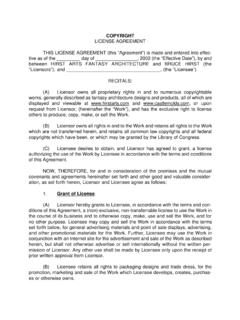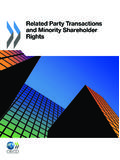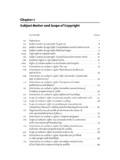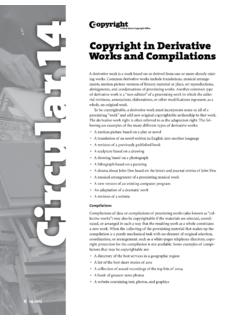Transcription of Child Rights and Mining Toolkit - Home page | UNICEF
1 Child Rights and Mining Toolkit1 Best practices for addressing children s issues in large-scale Mining Child Rights and Mining Toolkit UNICEF /UNI78109/LEMOYNE UNICEF /IHYLLESTED/2013 Child Rights and Mining Toolkit2 Acknowledgements This publication was produced by UNICEF s Child Rights and Business and technical experts: Ed O Keefe, Benjamin N not, Daniel Limpitlaw and Tanja Rasmussen, Synergy GlobalProject managers: Ida Hyllested and Amaya Gorostiaga The publication also benefited from inputs and comments from a range of key stakeholders including Ambatovy, Anglo American, Barrick Gold Corporation, Danish Institute for Human Rights , International Council for Mining and Metals (ICMM), Initiative for Responsible Mining Assurance (IRMA), Newmont Mining Corporation, Sherritt International, Teck Resources Limited as well as UNICEF colleagues Alex Heikens, Federico Simcic, Francis West, Marija Adrianna de Wijn, Patrick Geary, Pamela del Canto, Simon Chorley, Sunjidmaa Jamba and Victoria and disclaimer All Rights to this Toolkit remain with the United Nations Children s Fund ( UNICEF ).
2 No part of this document may be replicated or redistributed without the prior written permission of UNICEF . A reference to a non- UNICEF website does not imply endorsement by UNICEF of the accuracy of the information contained therein or of the views 2017 United Nations Children s Fund Child Rights and Mining Toolkit3 Contents Abbreviations ..5 Introduction to the Toolkit ..6 What is this Toolkit ? ..6 How should the Toolkit be used? ..7 Getting started: UNICEF s Child Rights Self-Assessment tool ..71. Impact assessment .. The unique vulnerability of children .. Screening .. Scoping .. Baseline studies .. Impact identification and evaluation ..162. Stakeholder engagement .. Why is it important to apply a Child Rights lens to stakeholder engagement? .. When should Mining companies engage directly with children? .. How can companies engage effectively with stakeholders on Child Rights ? ..223. Resettlement .. Overview of the issues and related standards .. Planning.
3 Implementation .. Consultation, participation, and monitoring and evaluation ..434. In-migration .. Overview of the issues and related standards .. Data collection for planning .. Management .. Mitigating impacts .. Monitoring ..575. Environment .. Overview of the issues and related standards .. Scoping for environmental impact assessment and management plans .. Baseline studies .. Impact identification and evaluation .. Monitoring, evaluating and reporting ..656. Security .. Overview of the issues and related standards .. Security providers and the justice system .. Temporary or permanent loss of a family member .. Employment of children ..72 Child Rights and Mining Toolkit47. Health and safety .. Overview of the issues and related standards .. On-site health and safety .. Transportation infrastructure ..788. Working conditions .. Overview of the issues and related standards .. Working hours, shifts and commutes .. Discrimination against women or parents/caregivers.
4 Working conditions in the supply chain and management of on-site contractors .. Hazardous materials and activities .. Wages, benefits and living conditions ..909. Protecting children from sexual violence .. Overview of the issues and related standards .. Internal policies and management systems .. Responsibilities over contractors .. Engagement with communities ..9810. Social investment .. Overview of the issues and related standards .. Identifying Child Rights impacts .. Designing a strategy .. Implementing corporate social investment to advance Child Rights .. Monitoring, evaluation and reporting ..108 Annex A. Child vulnerability matrix ..110 Annex B. Potential positive and negative impacts on children due to in-migration .112 Annex C. Environmental impacts on children ..114 Contents Child Rights and Mining Toolkit5 AbbreviationsASM artisanal and small-scale miningCDA community development agreementDIHR Danish Institute for Human RightsFGM/C female genital mutilation/cuttingFIFO fly in, fly outICMM International Council on Mining and MetalsIFC International Finance CorporationILO International Labour OrganizationIPIECA International Petroleum Industry Environmental Conservation AssociationKPI key performance indicatorNGO non-governmental organizationOECD Organisation for Economic Co-operation and Development Child Rights and Mining Toolkit6 Introduction to the ToolkitThe Children s Rights and Business Principles1 developed by UNICEF , the United Nations Global Compact and Save the Children, in 2012, are the first comprehensive set of principles to guide companies on the full range of actions they can take in the workplace, marketplace and community to respect and support children s Rights .
5 As part of its approach to implementing these principles, UNICEF is developing sector-specific guidance for businesses that are aiming to integrate respect and support for children s Rights into their policies, operations, due diligence, relationships with governments and investments in local 2014, UNICEF commissioned action research with Mining companies to identify and analyse the sector s impacts on children s Rights and better understand how companies are currently managing these impacts. In consultation with multiple Mining companies, this work resulted in the UNICEF Extractive Pilot report, Children s Rights and the Mining Companies in the Mining sector almost uniformly agree that children are vulnerable stakeholders within the community. But they often encounter challenges in understanding how children could be affected directly, rather than only as a result of Mining impacts on adult family members or the broader community. Failing to consider children as distinctive stakeholders means that companies may not identify their specific impacts on children.
6 This leads to critical gaps in most standard approaches to social, environmental and human Rights due diligence and management systems. As a follow-up to the Extractive Pilot, UNICEF commissioned Synergy Global Consulting to develop practical guidance for Mining companies that want to take concrete steps in addressing their potential positive or negative Child Rights impacts. UNICEF s Child Rights and Mining Toolkit is the result of this children are affected by a wide range of issues, a comprehensive business approach will consider Child Rights throughout the company s management systems and strategies. The Toolkit is designed to assist any of those in the Mining sector who are responsible for designing and implementing strategies related to social and environmental performance at the project level. It provides 10 concise tools for improving social and environmental performance towards respecting and advancing children s Rights in the following areas:1. Impact assessment2.
7 Stakeholder engagement3. Resettlement4. In-migration5. Environment6. Security7. Health and safety8. Working conditions9. Protecting children from sexual violence10. Social investment1 United Nations Children s Fund, United Nations Global Compact and Save the Children, Children s Rights and Business Principles, UNICEF , Geneva, 2012; available at < >.2 United Nations Children s Fund, Children s Rights and the Mining Sector: UNICEF Extractive Pilot, UNICEF , Geneva, March 2015; available at < >.What is the Toolkit ? Child Rights and Mining Toolkit7 Introduction to the ToolkitTool 1. Impact Assessment and Tool 2. Stakeholder Engagement provide cross-cutting guidance that can be applied to any of the other areas. Each tool can be used independently for specific purposes, according to the company s needs and circumstances, and offers: An overview of the Child Rights issues. Tables outlining potential risks, questions/indicators, and strategies and actions. Links to the associated external resources and standards.
8 Examples of companies initiatives to respect and advance children s s Child Rights and Mining Toolkit supplements existing guidance, handbooks and standards. It provides additional information tailored to Mining companies, in reference to the resources that are highlighted in each tool. As a foundation, the United Nations Guiding Principles on Business and Human Rights describe the responsibility to respect human Rights as requiring companies to: Avoid causing or contributing to adverse human Rights impacts through their own activities, and address such impacts when they occur. Seek to prevent or mitigate adverse human Rights impacts that are directly linked to their operations, products or services by their business relationships, even if they have not contributed to those The Toolkit takes this premise to the next step: applying a Child Rights perspective. The 10 tools it offers will guide users in identifying key Child Rights issues for their operations and assist in developing appropriate management systems, strategies and performance indicators to respond to these issues.
9 The processes, strategies and actions it outlines are not prescriptions that all companies must follow and implement, but rather suggestions that can be used to more effectively respect and support Child Rights , enhance children s protection, health and well-being, and strategically invest in the communities where they described in the next section, this Toolkit is designed to be used in tandem with the Child Rights Self-Assessment are the social and environmental factors regarding Child Rights that need to be taken into consideration for a Mining project? Which type of context is particularly sensitive and might have high impacts on Child Rights ? How does protecting children s Rights fit into specific management systems?As a first step towards answering these and other important questions, Mining companies can use the Child Rights Self-Assessment. This preliminary diagnostic tool is designed to help companies determine the social and environmental issues that might arise in relation to children s Rights according to their particular operations and the context of specific projects.
10 3 Office of the High Commissioner for Human Rights , Guiding Principles on Business and Human Rights : Implementing the United Nations Protect, Respect and Remedy Framework, United Nations, New York and Geneva, 2011, p. 14; available at < >.How should the Toolkit be used?Getting started: UNICEF s Child Rights Self-Assessment toolChild Rights and Mining Toolkit8 The web-based tool follows two steps: 1. Step 1 relates to the most essential issues a company must consider in regard to children s Rights for its operations. It requests the user to rate the potential scale of issues for its operations in relation to children s Rights , according to criteria set out specifically for the Mining industry. 2. Step 2 relates to the context surrounding the Mining project and the extent to which children s Rights are likely to be protected or not. After the user indicates the country in which the Mining company operates, several indicators on the level of Child protection based on the Children s Rights and Business Atlas4 will be automatically generated.















